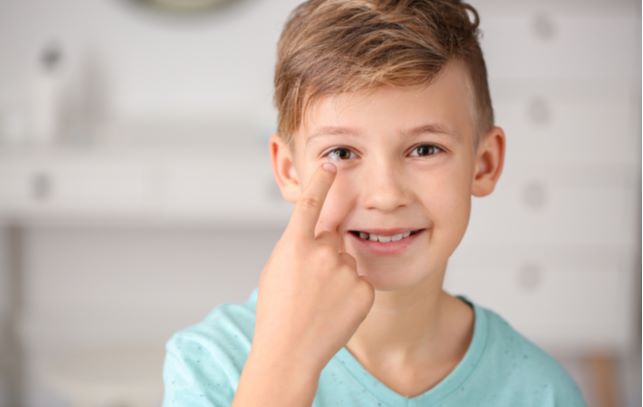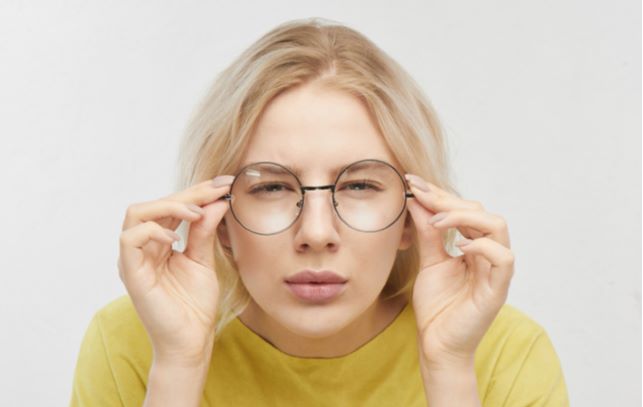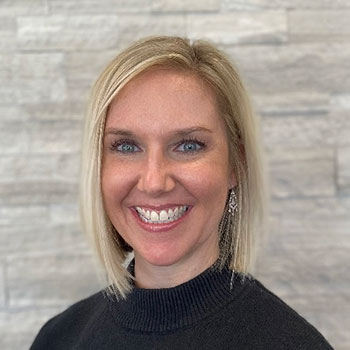Millions of people live with refractive errors like myopia and hyperopia. Your eye doctor can identify these conditions during a comprehensive eye exam, but what is myopia, and how does it affect your vision?
Continue reading to learn more about myopia, including what it is, what causes it, and what treatments are available today.
What is Myopia?
Myopia is a common refractive error. Also known as nearsightedness, this condition causes close objects to appear clearly while further away images are blurry. Blurry vision occurs because incoming light rays can’t bend properly.
There are several symptoms of myopia, including:
- Blurry vision
- Excessive squinting
- Headaches
- Strained eyes
Myopia in Children
Many children develop myopia but are unaware they have symptoms. Blurry vision can seem normal if that is all they’ve experienced. Some common signs a child has myopia include:
- Squinting consistently
- Sitting closer to digital screens to see
- Blinking excessively
- Rubbing their eyes frequently
The Risk of High Myopia
Myopia can develop into a more severe form when progression is left untreated, known as high myopia. Besides a child’s vision worsening, high myopia increases the risk of several eye diseases, including:
Myopia is rising in prevalence; an estimated 50% of the world will have this condition by 2050. What causes this condition to develop?
What Causes Myopia?
Myopic eyes are different from someone without myopia. The eyeball is typically longer, or the cornea has a steep curvature. Incoming light can’t focus properly, leading to blurry vision.
Besides eye shape, other factors can contribute to myopia development, including:
- Family history
- Increased time in front of screens
- Reduced time spent outdoors
Myopia typically develops in early childhood, progressing until it stabilizes in adulthood. If you have myopia, what are the available treatments for this condition?
Myopia Treatment: What’s Available?
There are many available treatments for myopia today. There are a couple of factors your optometrist will consider when creating your customized treatment plan. When treating this condition, there are 2 methods: myopia correction or control.
Myopia correction focuses on providing you with clearer vision, while myopia control is for children to help slow this condition’s progression.
Myopia Correction
Myopia correction can help you see more clearly in many ways. Whatever your preference is, your optometrist can recommend an effective solution to your blurry vision. These treatments include corrective lenses or laser eye surgery.
Corrective Lenses
Corrective lenses include glasses and contact lenses. They adjust incoming light as it enters your eye, helping you see better. Your optometrist can help find the right lenses for you based on your unique needs.
Glasses are a staple of vision correction. Highly customizable and reliable, you can put on your lenses every day and experience crisp, clear vision.
Contact lenses can provide you with a more natural vision. These lenses move with your eye and offer different benefits depending on your needs. There are many styles and types of contact lenses available, and your eye doctor can fit your new contacts during a contact lens exam and fitting.
Laser Eye Surgery
Laser eye surgery reshapes the cornea to treat refractive errors like myopia, hyperopia, and astigmatism. Laser eye surgery is safe and effective, but it may not be an option for everyone. The 3 common laser eye surgeries are:
While these treatment methods can help you see clearly, they can’t address myopia’s progression in children. Many myopia control treatments can effectively correct and control this condition.
Myopia Control
Myopia control helps slow or prevent this condition from progressing. Children’s eyes grow with them; this growth can cause a mild case of myopia to progress into high myopia. Myopia control treatments can help protect children from worsened eyesight and a higher risk of eye diseases.
Some of the common myopia control treatments include:
- Orthokeratology (ortho-k)
- Low-dose atropine
- Soft multifocal contact lenses

Orthokeratology (Ortho-K)
Orthokeratology lenses are specialized contacts someone wears overnight to reshape the cornea. These lenses flatten the cornea, making light focus correctly throughout the day.
They’re an effective way to slow myopic progression in children without the need for corrective lenses during the day.
Low-Dose Atropine
Atropine eye drops take a different approach to myopia control. They work to relax the eye’s focusing mechanism, dilating the pupil and relaxing the eye’s focusing efforts. There’s evidence that low-dose atropine eye drops can help slow myopia progression.
Soft Multifocal Contact Lenses
Multifocal contacts differ from standard contact lenses. They feature different focus areas, with the center of the lens dedicated to correcting myopia; the outer rings of the lens blur peripheral vision, which can slow myopia progression.
Regardless of age, there’s a myopia treatment that can suit your needs, and your optometrist can help you get there. They have the expertise to determine the most effective ways to address myopia and provide you with clearer vision.
Gain the Clear Vision You Deserve
Myopia can be frustrating to deal with, but your optometrist has many available treatments. Whether you need treatment for yourself or your child, your eye doctor can conduct a comprehensive eye exam and help you manage this condition.
If you or someone you know is experiencing symptoms of myopia, contact your optometrist.




